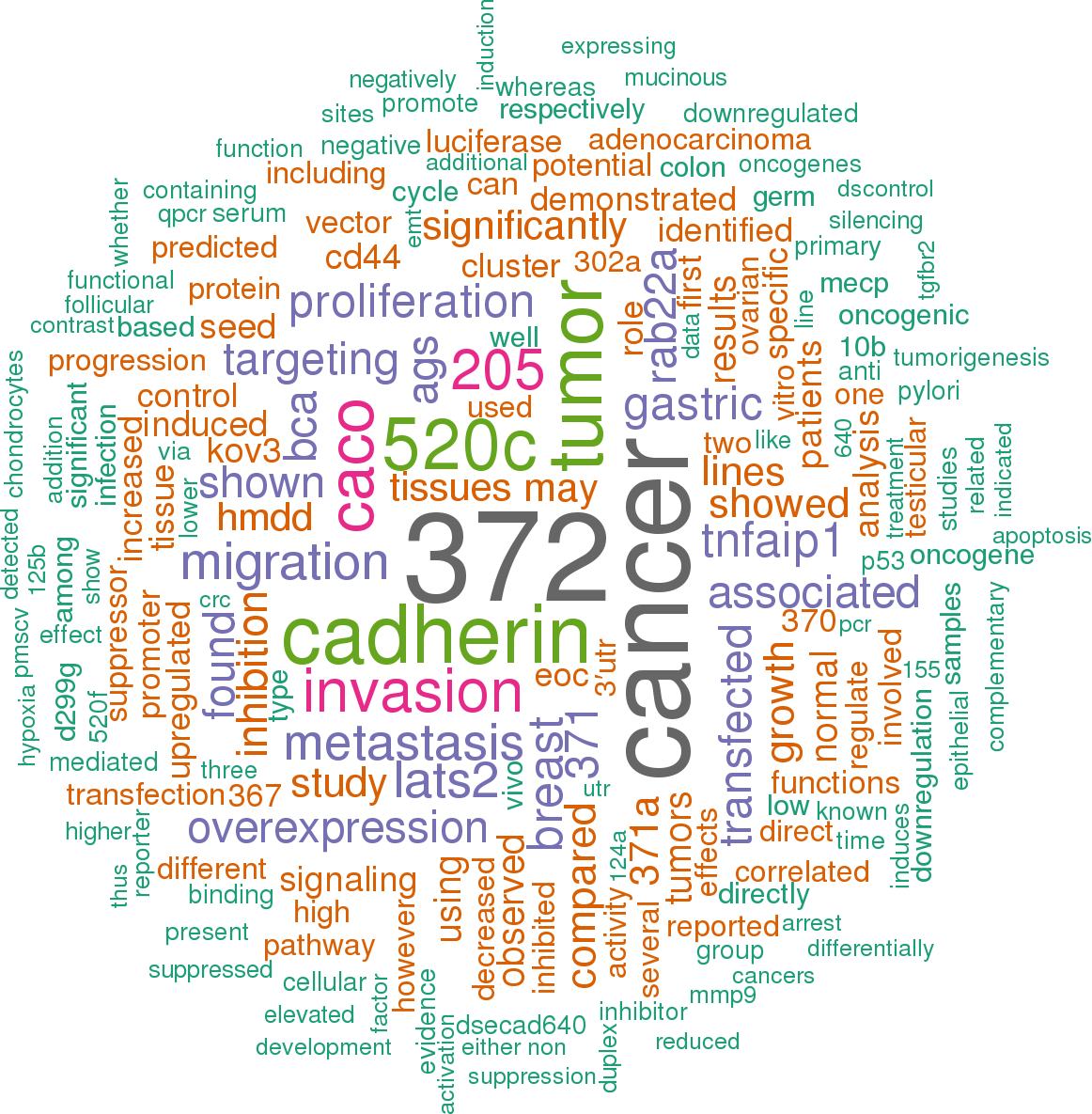Accession
MI0000781
Symbol
HGNC:
MIR373
Description
Homo sapiens
hsa-mir-373 precursor miRNA mir-373
Gene
family?
family?
RF04269;
mir-373
Summary
Caution, this is an AI generated summary based on literature. This may have errors. ?
MIR373 is a microRNA implicated in various cellular processes, including the regulation of the actin cytoskeleton, as suggested by computational algorithms that predict its role in modulating proteins such as twinfilin and profilin-2 [PMC7408560]. Research has shown that inhibiting microRNAs like MIR373 can lead to the de-repression of their target genes, indicating a regulatory function [PMC6591970]. In the context of breast cancer, MIR373 has been identified as a potential biomarker; its expression levels were notably different when comparing breast cancer patients to healthy individuals [PMC8182592]. Furthermore, MIR373 has been associated with metastatic ability in cancer studies, where it is found in a subpopulation of cells with extensive chromosomal aberrations [PMC8466266]. In terms of diagnostic potential, MIR373 was evaluated alongside other microRNAs such as miR371 and miR372; however, miR371 was found to have superior sensitivity and specificity for certain conditions [PMC8575592]. Lastly, increased levels of MIR373 have been observed in the substantia nigra (SN) of patients with Parkinson's disease (PD), suggesting its involvement in defective chaperone-mediated autophagy (CMA) and potential accumulation and aggregation of pathological proteins like α-synuclein [PMC6627933].
Literature search

151 open access papers mention hsa-mir-373
(849 sentences)
(849 sentences)
Sequence
134
reads,
28
reads per million, 21 experiments
gggauACUCAAAAUGGGGGCGCUUUCCuuuuugucuguacuggGAAGUGCUUCGAUUUUGGGGUGUccc
((((((((((((((.((((((((((((..............)))))))))))).))))).)))))))))
((((((((((((((.((((((((((((..............)))))))))))).))))).)))))))))
Structure
- G uuuuug
gggauACUC AAAAU GGGGCGCUUUCC u
||||||||| ||||| ||||||||||||
cccUGUGGG UUUUA CUUCGUGAAGgg c
G G ucaugu
Annotation confidence
Not enough data
Do you think this miRNA is real?
Genome context
chr19: 53788705-53788773 [+]
Clustered miRNAs
3 other miRNAs are < 10 kb from hsa-mir-373
| Name | Accession | Chromosome | Start | End | Strand | Confidence |
|---|
Disease association
hsa-mir-373 is associated with one or more human diseases in the Human microRNA Disease Database
| Disease | Description | Category | PubMed ID |
|---|
Mature hsa-miR-373-5p
| Accession | MIMAT0000725 |
| Description | Homo sapiens hsa-miR-373-5p mature miRNA |
| Sequence | 6 - ACUCAAAAUGGGGGCGCUUUCC - 27 |
| Evidence |
experimental
cloned [1] |
Mature hsa-miR-373-3p
| Accession | MIMAT0000726 |
| Description | Homo sapiens hsa-miR-373-3p mature miRNA |
| Sequence | 44 - GAAGUGCUUCGAUUUUGGGGUGU - 66 |
| Evidence |
experimental
cloned [1-2], Northern [1] |
| Database links |



|
| Predicted targets |



|
References
|



